Elizabeth Harrin's Blog, page 18
December 28, 2023
PDUs for CAPM: The Complete Guide for 2024
Do you need PDUs for the Certified Associate in Project Management (CAPM)® certificate? Yes, you do!
In this article I’ll explain what this means for CAPM certification holders and how you can maintain your credential without having to take the exam again.
Spoiler: If you already know you need them and don’t want to read on, here’s my recommended all-in pack of PDUs for CAPM certificate holders.
What’s the story about PDUs for CAPM?As of 1 October 2020, CAPM® certification holders need to earn professional development units (PDUs) to maintain their credential. This is hardly news now, but if you’ve held your certificate for some time, it’s relevant.
Previously, CAPM holders had to take the exam every 5 years. Frankly, if you are working in a project delivery capacity, after 5 years you will have enough experience to go for your PMP® certificate, so I’m not sure how many people bothered to re-take the CAPM exam.
Either way, it doesn’t matter anymore. The requirement to take the exam again has gone!
Why did the renewal requirement change?PDUs are a way to prove that certification holders are continuing to build their professional skills. This goes for all kinds of professional organizations, not just PMI. Many professional bodies have a requirement for members holding designations and post-nominal letters to maintain their knowledge at a current standard.
I think the switch was a good thing. It’s easier to manage (for us and for PMI) and also shows that people are taking an active interest in the project management profession.
In other words, you can no longer take the test, do nothing in project management for 5 years, and then take the exam again. That doesn’t convince an employer that you are interested and committed to the project profession.
And let’s be honest, the PDU requirements for CAPM are minuscule, as we are about to see.
Also, there are plenty of easy ways to earn PDUs — more on that below.
 How many PDUs do you need for CAPM?
How many PDUs do you need for CAPM?You need 15 PDUs over 3 years.
There is a transition period. If you passed your exam on or before 30 September 2020 your expiration date will not change. Your certificate expiration date stays the same and you have until that time to earn your 15 PDUs.
Once that date has passed, you’ll be on the 3-year cycle. As time passes, fewer and fewer certificate holders are going to fall into this category. When we get to 29 September 2025 everyone will be on the 3-year cycle.
You also have to pay the renewal fee to maintain your certificate – it’s not just about the ongoing learning.How are PDUs calculated?PDUs are calculated by the hour. One PDU equals one hour of professional development, and you can earn them in fractions of 0.25 of a PDU.
For CAPM holders, that equals 15 hours of continuous professional development time over 3 years (or 5 years if you took your exam on or before 30 September 2020).
You have loads of time to earn your PDUs. It’s going to be easy, trust me. And if you are up against a deadline for your recertification, I have an article on how to earn PDUs fast.
What type of PDUs do you need?For CAPM certification renewal, you need:
a minimum of 9 Education PDUs including two in each Talent Triangle area: Ways of Working, Power Skills and Business Acumen.a maximum of 6 Giving Back PDUs with a maximum of 2 for working as a professional and 4 for volunteering and creating knowledge.Education PDUs are made up of formal and informal learning opportunities.
Giving Back PDUs relate to time spent contributing to the profession in various ways such as volunteering or creating content to help others learn.
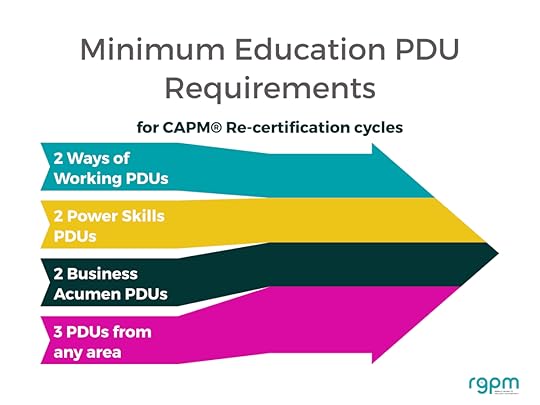 How to earn PDUs for CAPM renewal
How to earn PDUs for CAPM renewalLet’s look at some ways you could earn 15 PDUs for your CAPM renewal.
Option 1:
Earn:For doing:2Doing your day job and working in a project-related field7Attending a day-long project management training course run internally by your company3One hour of self-directed reading on leadership and business topics related to project management each year e.g. a relevant book or industry magazine or journal33 hours of listening to The PDU PodcastOption 2:
Earn:For doing:2Doing your day job and working in a project-related field – let’s continue to claim the easy PDUs!13+Study for your PMP exam with a course that gives you 35 contact hours AND counts as PDUs for your current credentialOption 3:
This option only includes opportunities to earn free PDUs for CAPM across the relevant categories.
Earn:For doing:2Doing your day job and working in a project-related field – this is a free way to get your PDU total going!4Volunteer for your local project management organization, for example the PMI Chapter closest to you. You should be able to manage 4 hours over 3 years doing things like signing in and welcoming visitors to an event, co-ordinating a seminar, introducing a speaker at a webinar etc.2Earn 2 Ways of Working PDUs for 2 hours of project management mentoring. Ask a more experienced manager to meet with you and talk to them about areas where you need clarification or support with regards to technical PM skills.2Earn 2 Power Skills PDUs for running or participating in a structured team building activity for 2 hours with your project team. Include a debrief afterwards either alone as a reflection exercise or with the team.2Earn 2 Business Acumen PDUs for 2 hours of reading. Look at your company’s strategic plan or industry magazines (not specifically project management related – ones that relate to the industry that you work in).2Watch webinars. Get started with these:Tips for managing multiple projects
What it takes to be a successful project manager
Practical strategies for managing your work2Give a presentation. Prepare your material, rehearse and present. Respond to questions and follow up with attendees by sending out your slides, a satisfaction survey and any other reference material you referred to. That’s easily 2 hours of work for a 30 minute presentation.
The presentation could be to your internal team about a project success and what you learned from the experience. Or you could give a keynote at an international conference… it’s up to you!
Option 4:
This is the easiest way to collect your PDUs on auto-pilot!
Earn:For doing:15+Subscribe to The PDU Podcast and get video podcasts delivered to your device. That covers ALL your CAPM requirements in just one year, leaving you secure in the knowledge that you’ve completed all your re-certification activity with lots of time to spare.Watch them over time or binge them all in a weekend, depending on how quickly you need to collect the units!Tip: If you have other PMI certifications, any PDUs you earn for them can be applied to the PDU requirements for the CAPM certification. You don’t have to earn ‘unique’ PDUs for CAPM!
Whatever route you choose, it’s really important to learn ways to find time for continuous professional development at work so you can fit it in.
15 PDUs CAPM PDU Package $49The PDU Podcast CAPM Package gives you fast, convenient access to the PDU learning materials you need. Simply add your subscription to your favorite free or premium podcast app, download the webinars and start earning your PDUs.
With The PDU Podcast CAPM Package you get instant access to 10 high-quality webinars on curated topics, perfectly aligned to the Talent Triangle®.
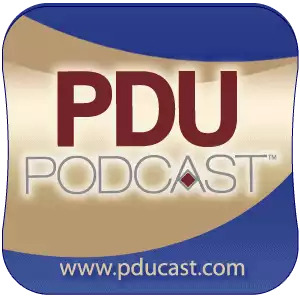 Buy Now We earn a commission if you click this link and make a purchase, at no additional cost to you #ad Next steps for CAPM renewal
Buy Now We earn a commission if you click this link and make a purchase, at no additional cost to you #ad Next steps for CAPM renewalReady to take the next steps in earning your PDUs for CAPM? Here’s what you should do next:
Download the CCR Handbook from PMI. It’s got a lot of useful information and you should familiarize yourself with what’s required.Sign up to The PDU PodcastPut time in your calendar every 3 months to record what PDU activity you have done in the CCRS, so you stay on top of your professional development over the re-certification cycle.Top tip: People often say that the Power Skills requirements are the most awkward ones, so here are some tips for earning Power Skills PDUs.
With a bit of thought and preparation, you’ll find it super easy to maintain your certification!
Pin for later reading
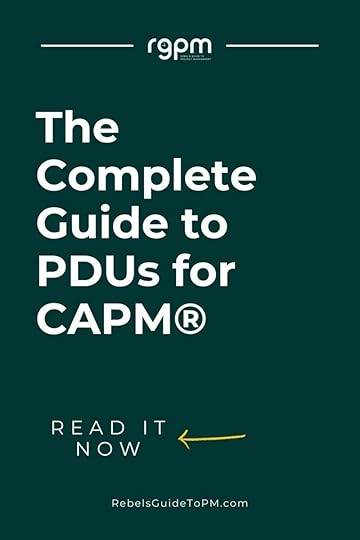
This article first appeared at Rebel's Guide to Project Management
December 21, 2023
7 Examples of productivity to help you get ahead
We all want to be productive in the office, but what does that actually mean? We often hear about ways we can work smarter and more efficiently, but without concrete examples it’s hard to know where to start.
To help you get on track with your productivity goals, we’ll look at some practical examples of how you could use your time efficiently, with case studies and real-life tips.
If you’re looking for real-world solutions for becoming more productive at work then look no further – these examples of productivity will have you working like a pro!
What does productivity mean?Productivity is the measure of how efficiently resources are used to achieve a desired outcome.
It is typically measured by comparing the amount of output (e.g. goods or services) produced with the amount of input (e.g. labor, materials, time) required to produce it.
For project managers and program managers, productivity can be improved through various tools and techniques such as setting clear goals and objectives, breaking down tasks into manageable chunks, using automation where possible, delegating responsibilities effectively, tracking progress regularly and rewarding success appropriately.
Being busy is not the same as being productive. Busyness might mean you’re spending time on the wrong things. Productive people spend time on the right things.
1. Set goalsWhat, exactly, do you want to get done? If you don’t know how you will measure success and answer the question, “Have I been productive today?” then start here. It’s important to set realistic and achievable goals that will help you stay on track.
Start by breaking down your larger goal into smaller, more manageable tasks that can be completed in a day or week. This will make it easier for you to focus on the task at hand and work towards achieving your overall goal.
2. Write things downWrite down tasks to reduce the mental overload of having to remember them. Do a brain dump of all your current tasks to get started, and ideally, group the To Do items. I teach this strategy in my course, Mastering Multiple Projects, but a simple way to implement it is to color-code your list or add sub-headings.
I use a sticky note to write down my top 3 activities that I need to complete the next day. I stick it on my keyboard in the evening, so when I get to work the next day, I have a clear reminder of my major tasks for the day.
Everything else I’ll take as a win, but getting those 3 things done are the non-negotiables.
3. Make it easy to do the workEver written down the name of someone to call and then forgotten why you were supposed to call them? Write clear descriptions of tasks so when you come back to them you know what the work actually is.
Leave room in your calendar for crisis management. Because there’s always something, isn’t there?
In project management, typically we schedule resources (that’s humans i.e. yourself) at 80% availability, which enables us to have resilience in the system for when things go wrong. Or we need a toilet break, which is also very likely.
If you don’t have the buffer, it becomes hard to do the work because there is no time.
4. Prioritize your timePrioritize where to spend your time by looking at a task’s importance and urgency (the Eisenhower matrix). Identify which tasks need immediate attention and which ones can wait until later in the day or week if needed. Ideally, you want to be spending the most time on priority tasks.
I try to spend most of my time on high priority, project-related actions and then use the gaps between meetings for shorter, less urgent tasks like responding to emails.
5. Identify your productivity saboteursIdentify your productivity saboteurs. These are the things that stop you from being effective and productive.
When you know what they are, you can spot them coming or make plans to avoid them! Trust me, you’ll get more done without them!
This is why I deleted Twitter (X) from my phone.
6. Schedule time to do workOnce you have established your goals, it’s time to schedule time for them. Make sure to plan out when you are going to complete each task so that you don’t get overwhelmed or fall behind.
You may also want to create a timeline of deadlines so that you know when each task needs to be completed by in order for everything else to stay on track as well.
I block out time in my diary for ‘focus time’. I don’t always know what I’m going to use the time for, so I make the decision on the day, based on current priorities.
7. Schedule proactive timeProactive time is not the same as getting tasks done but not having the time to plan ahead of think strategically. You can instead prepare and be moving steadily towards your goals (accomplishing important things each day, taking time to think and plan).
I learned about this strategy in From To Do to Done by Maura Nevel Thomas.
8. Use your technologyTechnology can be a great tool for increasing productivity in the office, as long as you know how to use it!
Automating processes is one way to save time and energy, and works for many different job roles. For example:
Set up automated reminders – I do this with calendar alerts and email alertsCreate templates for frequently used documents – I never create a document from scratch if I can help itSchedule emails to send at certain times of day – for example, a weekly reminder to the team to complete their weekly report. You could schedule a month’s worth of those in one go.Find a tool you like using and that meets your needs (this is the service I use for that).
Match the tool to the jobStreamlining communication is another key component of being productive in the workplace. Using tools such as Slack or Zoom can help reduce unnecessary back-and-forth emails while still allowing team members to connect quickly when needed.
Match the tool to the job. Quick messages that don’t need to be kept or referred to later: messaging app. Need to send an attachment or something that would benefit from being archived? Use email or attach it within your project management software.
9. Work collaborativelyBook meetings that are working sessions, not review sessions. Productive meetings are those where you can get stuff done, whether that’s a decision or a direction for next steps or working jointly on a document.
Meetings that are just reviewing actions from last time, or round-the-table status updates, are boring for attendees and make you feel like it wasn’t a productive use of your time.
Working in teams can be a great way to increase productivity. It’s important to ensure that everyone is on the same page and has a clear understanding of their role and responsibilities.
Share the goals so everyone knows why they are there.
10. DelegateLearn how to delegate tasks appropriately so that each person is able to contribute their strengths while also taking ownership of certain aspects of the project or task at hand.
Assigning roles based on individual skillsets will help ensure that each team member is playing an active part in the success of the project or task. It also helps foster a sense of responsibility among team members as they are held accountable for completing their assigned tasks within agreed timelines (and hopefully you’ve let them set the timelines, based on their own professional task estimates of the job to be completed).
11. Manage stress levelsStress levels can have a big impact on productivity in the office. It’s important to find ways to manage stress so that you can stay productive and focused. Here are some tips for managing stress levels.
Taking breaks and recharging: Taking regular breaks throughout the day is essential for staying productive. Take a few minutes away from your desk to go for a walk, grab a snack, or just take some deep breaths. This will help clear your mind and recharge your energy so that you can tackle tasks with renewed focus when you return to work. Don’t use this time to put a load of washing on.
Practicing self-care habits: Make sure you’re taking care of yourself outside of work as well by getting enough sleep, eating healthy meals, exercising regularly, and engaging in activities that bring joy into your life such as hobbies or spending time with friends and family. All these things will help keep stress levels down during the workday.
Seeking support from colleagues: Don’t be afraid to reach out if something is stressing you out at work – chances are there are others who feel similarly! Talk it out with colleagues or seek advice from someone more experienced than yourself; having an open dialogue about stressful situations can often lead to solutions that benefit everyone involved.
Don’t forget about mental health resources available through employers or other organizations – they’re there if needed!
12. Stay motivated and focusedIn Not Today: The 9 habits of Extreme Productivity by Erica & Mike Schultz, they write about how to stay motivated. Motivation, they say, is learnable.
Work on your Greatest Impact Activity (GIA) first. They say the sparks to get started on your GIA include: put it on calendar, talk positively to yourself to remove self-limiting beliefs, ans simply sitting there at your desk and saying, “1, 2, 3, go!”
I’m not sure that would work for me, but it might work for you.
Check out my tips to stay motivated during the summer, as this is the time that I find it harder to concentrate on work. The children are out of school and my office is like a sauna, which doesn’t help!
13. Create habitsIn Not Today, the authors write that habits are composed of 4 elements:
Trigger (something happens that cues a sequence of doing something you tend to do e.g. your phone buzzes in your pocket)Thought (I should reach for my phone)Response (take action: check the phone)Reward (gain or payoff)Identify the habit you want to change. Identify why you want to change the habit. Make a blueprint (plan) to change the habit that sounds like this: “When I, then I.”
For example, when I get asked to complete my timesheet for the month, then I schedule time to do it before the deadline.
32% of Extremely Productive people plan in advance how to respond to triggers compared to 10% of ‘normally productive’ people (based on their survey/data from clients shared in the book).
14. Tidy your work environmentOne more tip from Not Today. 56% of Extremely Productive people organize their work environment to maximize productivity compared to 17% of The Rest.
What can you do to make your work environment – your desk and office area – as conducive to productivity as you can. Here are some things I’ve tried:
Plants: I had live plants for the oxygen benefits but now I have a plastic plant. It does make me feel better and it looks great on camera.Chair: Be comfortable.Desk area: Keep things tidy. I bought a desk tidy from Ikea for pens and dongles and all the other stuff I need around.15. Celebrate small winsRecognize your progress no matter how small it may be. Acknowledging each step forward will motivate you to continue working hard towards your goals. Whether it’s completing a task or meeting a deadline, celebrate those successes!
You could reward yourself with something as simple as taking an extra break or treating yourself to lunch out of the office. Don’t be like those people who reward themselves with being allowed to have a drink… drinks and bathroom breaks are not rewards, these are normal, allowable behaviors!
Read my list of things to do to celebrate with your team for more suggestions.
16. Set rewards for accomplishmentsThere’s a reason companies have incentive schemes. They do make people focus on goals.
Establishing incentives for completing tasks can be helpful in keeping motivation levels high throughout the day, week or month. You can share your targets with someone else to help keep you accountable.
17. Speak positively to yourselfWhen feeling overwhelmed by workloads or deadlines, take a moment to pause and reframe any negative thoughts into positive ones instead. For example, replace “This is too much work” with “I am capable of achieving this goal”.
I’m not very good at this, but I am getting better. I tend to use positive self-talk to reflect on how it’s OK to take breaks and that I will be better at doing a task if I’m mentally refreshed and not feeling overwhelmed.
More info on workplace productivityWhat is an example of productivity in business?Productivity in business is the measure of how efficiently resources are used to create goods and services. It is an important metric for businesses as it helps them determine their output, profitability, and overall success.
Typically, workplace productivity is measured through output reports e.g. how many widgets were created in a month, how many calls were answered in an hour.
The challenge there is that the metrics don’t necessarily incorporate quality. You could answer 100% of all calls within 3 rings every time, but if callers don’t get the answer they need, the call was not productive, as it does not help the customer move on.
Productivity can be improved through effective management techniques such as goal setting, task delegation, time tracking, process optimization, and resource allocation. By using these tools to maximize efficiency while minimizing wastefulness or redundancy, businesses can increase their productivity and ultimately achieve greater success.
What is productivity in daily life?Productivity is the measure of how efficiently time and resources are used to achieve a goal. It is an important part of daily life as it allows us to maximize our output with minimal effort.
Productivity can be improved by setting achievable goals, breaking down tasks into manageable chunks, prioritizing activities, and using effective tools and techniques for managing projects. By taking these steps we can increase our productivity and make the most out of every day.
However, there should be a point to all this productivity. Doing stuff just to do stuff is a little pointless. There will always be more stuff to do.
I frequently get overloaded with household work and feel behind on chores, but what’s more important, spending time playing a game with my kids or hoovering the bedrooms? That’s the decision to make.
Both options are productive, but in different ways.
How can productivity be improved?Here are some quick examples of how productivity can be improved:
Make the workplace a nice place to be. No one is productive in a grotty environment with mean, micro-managing bosses.Give people the tools they need to do their jobs and train them how to use them.Set priorities across the organization or team.Make sure there is good communication and a culture of openness and sharing as this reduces re-work.Be open to feedback and continuously improve based on what people are asking for.Final thoughtsOverall, there are many ways to be productive in the office. Establishing a routine, utilizing technology, working in teams, managing stress levels and staying motivated and focused can all help you become more productive.
Most importantly, set goals that you can achieve, prioritize your work and spend your time being productive on the right tasks.
Next steps: Take a look at this on-demand training from Elizabeth Harrin paired with the productivity bundle, The Productivity Blueprint for Project Managers.
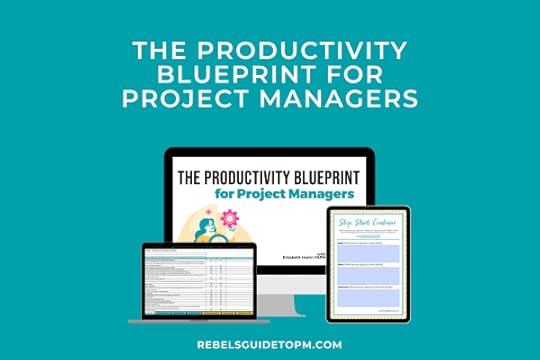
This article first appeared at Rebel's Guide to Project Management
December 10, 2023
15 Easy Ways to Earn PDUs in 2024
Do you need to earn PDUs to maintain your PMI certification? You’re in the right place!
In this article, we’ll cover what you need to know about the different categories of PDUs and how many you need to get, plus some simple and free ways to earn PDUs in 2024.
There are also some further suggestions that take a bit more effort but are equally worthwhile in case you’ve got more time and energy to spare for your professional development.
What is a PDU?PDUs are professional development units. They are a measure of how much professional, continuous learning you have done.
PDUs are measured in hours. You can claim them in 15 minute chunks if you spend part of an hour on professional development.
How many PDUs do I need?If you hold a PMP®, PgMP®, PfMP® or PMI-PBA® certification, you need to earn 60 PDUs every three years.
That can be timed as 20 PDUs every year or 60 PDUs in the last 3 months of the three year cycle as you panic and try to get them all in before your certification expires.
If you hold a PMI-ACP®, PMI-RMP®, PMI-SP® certification, you need to earn 30 PDUs in a three-year cycle.
If you hold a CAPM® certificate, you need to earn 15 PDUs every three years.
The PDUs for every certification need to be made up of education undertaken in specific areas. More on that in a minute.
The tables below shows the different number of PDUs required for each certificate.
CertificationCertification CycleTotal PDUs RequiredEducation Minimum PDUsGiving Back Maximum PDUsPMP3 years603525PgMP3 years603525PfMP3 years603525PMI-PBA3 years603525PMI-ACP3 years301812PMI-RMP3 years301812PMI-SP3 years301812CAPM3 years1596These are detailed in the Continuing Certification Requirements (CCR) Handbook, so it’s worth getting a copy of that from the PMI website.
If you are close to your recertification deadline, read my guide on how to quickly earn PDUs for renewal.
PDU categoriesThere are two categories of PDU:
Education PDUsGiving Back PDUsEducation PDUsEducation PDUs are those earned from formal and informal learning across the three areas of the PMI Talent Triangle: Ways of Working, Power Skills, and Business Acumen.

Examples of ways to earn Education PDUs include:
Taking a course in-personAttending an online course, training session either live or as self-paced learningAttending a PMI Chapter meeting or PMI event where there is an educational sessionSelf-directed readingMentoring or other structured professional discussions with your colleagues and network e.g. lunch and learn meetings.CertificationTechnical PDUs RequiredLeadership PDUs RequiredStrategic PDUs RequiredRemaining PDUs from any Talent Triangle AreaPMP88811PgMP88811PfMP88811PMI-PBA88811PMI-ACP4446PMI-RMP4446PMI-SP4446CAPM2222Giving Back PDUsThe Giving Back category of PDUs are those earned from contributing to the profession and expanding your horizons through volunteering.
Examples of ways to earn Giving Back PDUs include:
Doing your day jobSharing your knowledge through publishing articles, podcasts, videos on your own website, your company website or a community platformGiving a presentation at an eventTeaching others.Maximum Requirements
CertificationWorking as a ProfessionalVolunteering & Creating KnowledgePMP817PgMP817PfMP817PMI-PBA817PMI-ACP48PMI-RMP48PMI-SP48CAPM24Download the CCR Handbook from the PMI website for a complete step-by-step breakdown of what you need for your particular circumstances.
How to maintain multiple PMI certificationsDid you realize that if you’ve got multiple certifications, your PDU activity can count for each one?
That’s a huge bonus! You don’t have to earn brand new PDUs for each certification. Simply do some professional development that earns you credit across your portfolio of certificates.
Make your PDUs do double duty supporting you for all your credentials!
Remember to report PDUs against all your relevant certificates in the CCR.
Power Skills and Business Acumen PDUs count for every certification you hold.Ways of Working PDUs can apply to more than one of your certifications as long as the subject is relevant. All Ways of Working PDUs count towards Project Management Professional (PMP)® maintenance, even if they are in a subject that feels more aligned to a different certificate, like the scheduling or risk credentials.
OK, now we’ve got that out of the way, let’s look at how you can boost your PDU count as quickly and easily as possible.
15 Easy ways to earn PDUsHere are some simple ways to earn PDUs for your PMI re-certification cycle. Many of these are free ways to get PDUs. Others are simple to do but come with a cost. There are loads of eligible activities to choose from, so let’s get started!
 1. Do your job
1. Do your jobDid you notice in the tables above that you can earn PDUs simply for doing your job? That’s got to be the easiest way to get started on your PDU total.
If you are working in any kind of project delivery role, PMO role, or similar in any industry, you can count some of your professional service working hours towards the maximum requirements for Giving Back.
You can use a copy of your job description as part of your evidence for this type of PDU claim.
You can’t claim a lot this way, so the best approach is to learn how to find time for continuous development as part of your regular schedule.
2. Claim for mentoringWhether you mentor others or are being mentored, you can claim that time as it is a structured professional discussion. You are working as a practitioner, so you’ve definitely got something to share with others.
Don’t have a mentor? I can help with that!
More formal coaching arrangements also work – record the hours you spend coaching others or receiving coaching. Talk to your manager to find out what options are available to you funded by your company.
3. Give a presentation at workIf you take a training course or attend a webinar, offer to give a 15-minute summary version to your team at the next team meeting. That’s 0.25 PDUs right there for knowledge sharing! Plus any time it takes you to prepare the presentation.
This is a simple way of earning PDUs for CAPM as it doesn’t require anything special to make happen.
 Give a presentation as part of your PDU earning activity4. Claim pre-course work and homework
Give a presentation as part of your PDU earning activity4. Claim pre-course work and homeworkIf you are doing an online or in-person training course, you’ll probably be sent some pre-course work or assignments to do outside of class time.
You can claim the time you spend on reviewing the course material as self-directed learning. That’s on top of the hours you spend actually in the course itself – more on that later.
5. Listen to The PDU PodcastThis is honestly the easiest way to earn those PDUs. Sign up for The PDU Podcast. Get 60 relevant PDUs delivered to your device and watch them when you need them. Get your PDU certificate and enter the info into the CCR system.
It’s easy because then you’ve got all the PDUs you need for the whole renewal cycle at a low price per PDU, so you can rest easy. Also, you get a breakdown of exactly which webinars cover what Talent Triangle areas, so you don’t have to worry about working out what episode aligns to which Education section.
There are various different products depending on how many PDUs you need. I’ve used this product, listened to many of the podcast episodes and even been in some of the episodes! From my experience, this is a great, reliable way to earn PDUs backed up with excellent customer service.
Below you can see the options and choose the best product for your needs. Personally, I’m a fan of the Power Skills package because earning Power Skills PDUs is trickier than getting the Ways of Working PDUs.
PDUs with the Agile PrepCast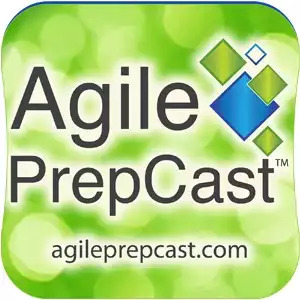 $129
$129 Earn 30.5 PDUs by listening to The Agile PrepCast and learning more about agile tools and methods.
Learn moreWe earn a commission if you click this link and make a purchase, at no additional cost to you #ad
PDU Podcast Power Skills Package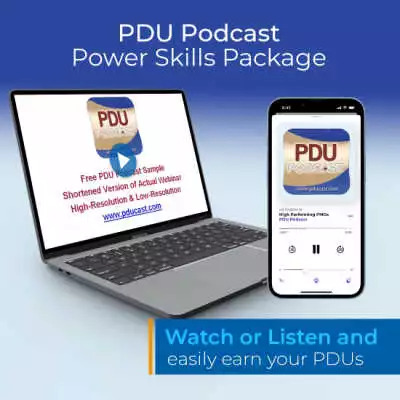 $49.00
$49.00 Get instant access to 10 high quality webinars on leadership and specialist topics to help you earn the difficult 'Power Skills' PDUs. The PDU Podcast Power Skills Package is perfectly aligned to the PMI Talent Triangle and gives you 15 PDUs.
Buy NowWe earn a commission if you click this link and make a purchase, at no additional cost to you #ad
CAPM PDU Package $49
$49 The PDU Podcast CAPM Package gives you fast, convenient access to the PDU learning materials you need. Simply add your subscription to your favorite free or premium podcast app, download the webinars and start earning your PDUs.
With The PDU Podcast CAPM Package you get instant access to 10 high-quality webinars on curated topics, perfectly aligned to the Talent Triangle®.
Buy NowWe earn a commission if you click this link and make a purchase, at no additional cost to you #ad
The PM PrepCast for PDUs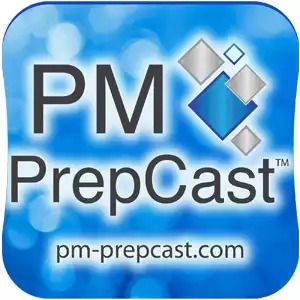 $199.00
$199.00 Earn all of the 60 PDUs you need to renew your PMP certification. It is aligned with the PMI Talent Triangle and includes a certificate of completion.
Buy NowWe earn a commission if you click this link and make a purchase, at no additional cost to you #ad
PDU Podcast $199.00
$199.00 Earn 60 PDUs by listening to these podcasts on your phone, mobile device, or computer. Learn from 25 project management experts when it is convenient to you, covering Ways of Working, Power Skills and Business Acumen.
Learn moreWe earn a commission if you click this link and make a purchase, at no additional cost to you #ad
6. Go to a (relevant) meetingYou don’t have to be a PMI member to go to a Chapter meeting. And with more and more Chapters offering webinars online, you may find it easier than ever to get to an event.
Typically, PMI will only let you claim 1-2 PDUs for organization meetings per certification renewal cycle, so review the upcoming calendar for your local Chapter and see what events are coming up. Choose something that sounds interesting!
Do check first if there is a fee: some Chapters offer events free to members and charge non-members. You might decide it’s worth joining the Chapter if the events look good enough.
7. Take a courseThe easiest way to earn a lot of PDUs in one go is to take a class. This is a particularly good option if you hold more than one certification because you can break up the PDUs and use them to count towards the various re-certification requirements.
Online, self-paced video courses are good because you can fit them in around your work responsibilities, but any project management training will count.
In fact, any relevant management or leadership or business skills training counts. I have taken the IBM Project Management Certificate but also the Google Digital Marketing certificate, a coaching course and some AI training — it all counts.
I use the Coursera app on my iPad so I can study on the go and it lets you download video lessons so you can work even when you don’t have an internet connection. Check out my favorite project management courses on Coursera.
I can also personally recommend the UVA Darden course if you want to improve your project planning, scheduling and tracking.
Do in a day Fundamentals of Project Planning and Management 5.0
Fundamentals of Project Planning and Management 5.0 A great short course from UVA Darden covering the basics at a good level. Best for project managers with some experience who want to improve their planning and project control.
See the course We earn a commission if you click this link and make a purchase, at no additional cost to you #adIf you prefer in-person learning, look into what your local community college is offering as evening classes or weekend study.
8. ReadingMembership of professional bodies normally comes with a journal or magazine. You can claim time for reading that, and heck, even this website!
Books also count, and there are some excellent project management books out there.
Just remember to write down what you learned and what you read, so you have an evidence log if you need to submit more information to PMI.
9. Watch a webinarGet started with the webinars here:
Tips for managing multiple projectsWhat it takes to be a successful project managerPractical strategies for managing your workThat’s at least a couple of free PDUs for you!
Online video is a simple way to learn new things, and it’s something you can fit into your lunch break at work. It’s also a good way to boost your leadership skills, as you’ll often find live and on-demand webinars covering leadership topics.
10. Contribute to a wikiIf you already have a Wikipedia login, you can start at the biggest wiki in the world and contribute your project management knowledge to that.
Or go small and contribute to the projectmanagement.com wiki, sharing what you know.
Perhaps you even have an in-house wiki for your team – that counts too.
11. Host a lunch and learn sessionOne of my favorite things to do at work was hosting the lunch and learn sessions. I curated a series of webinars over about a year. Project delivery professionals from all over the business joined the webinars (or watched the replays) over lunchtime.
It was surprisingly easy to organize in-house. You don’t need external speakers. Ask for volunteers to talk about what they learned on a project, or to do a deep-dive into something that went well (or not).
Or simply pull up an article on your favorite PM website, or a case study in a magazine and talk about what you would do in that situation.
I emailed the heads of departments about my lunchtime webinars and asked them to forward my message on. Then anyone who wanted to join the webinars could. I simply sent out a calendar invite to the people on the list.
You can claim PDUs for organizing the event and also speaking at it.
12. Spend time on ProjectManagement.comYou can earn PDUs for contributing to the community or watching videos. ProjectManagement.com is a website owned by PMI, and I think of it like the community wing. It’s packed with discussions, blogs, and other types of user-generated content, and it has a vast library of user-submitted templates.
There’s a huge selection of project management topics to browse.
Create content and join in! Write a blog post, contribute to a discussion, take a poll or a quiz, and start counting your hours.
13. VolunteerPersonally, I don’t think that volunteering is an easy way to earn PDUs. It’s a lot of work and while it’s very rewarding, it’s not something to commit to without understanding what it involves.
Talk to your local project management or business organization first and see what volunteer opportunities there are. It’s free – and volunteer work will often get you into big events for free – but it’s not always ‘easy’.
However, if you have plenty of free time and live or work close to where your local Chapter hosts meetings, then it might be an easier option for you. It’s also a great way to build a network of colleagues and make friends in the profession.
You’ll also get experience in different types of project and event management which might open doors in your career later.
14. Take a PMI e-learning coursePMI have some video-on-demand learning courses, including some that are for free, like this introduction to Agile course.
PMI changes its offerings all the time (goodbye, PMI Edge) and right now there are 2 free courses on the PMI website that are going to give you PDUs: the PMI Kickoff badges.
Free training! Kickoff from PMIAn excellent free beginners project management course that comes in Agile and Predictive versions. Perfect for accidental project managers and people needing a structured approach to project work for the first time.
 Take the course We may earn a referral fee if you sign up #pmiaffiliate #ad
Take the course We may earn a referral fee if you sign up #pmiaffiliate #ad If you want a simple way to quickly earn PDUs, paying for them is definitely an easy route and there are plenty of paid training options like the Wicked Problem Solving course which is brilliant.
Opportunities that offer you badges, quiz results, certificates and so on are great because they give you evidence that you can easily refer to if your development record is ever audited.15. Study for your next certificateIf you are already in the progress of studying for another certification or project management exam, that study time counts.
For example, if you study for the PMI-ACP using my recommended PMI-ACP prep course, you can record the time you spend on learning towards your PDUs for other certifications – as long as the content studied meets the requirements.
Study time doesn’t only have to be for PMI certificates. You could count training towards Scrum Master or other industry certificates too.
Extra ideas for earning PDUsFinally, here are a couple of extra ideas for earning PDUs. These ones don’t count in my book as ‘easy’ but they are certainly doable if you put the effort in.
You can create new content. That’s anything from an article in your company newsletter (as long as it is about something to do with project management) through to delivering a keynote speech or writing a book.
The easiest way to get started is to write some articles and share them on LinkedIn.
I don’t think that creating content for the project management community is particularly easy either, especially if you are new to putting yourself and your ideas out there. But if you want to improve your public speaking or corporate writing skills, then it’s definitely something you could do.
How to claim PDUsAll PDU claims are done via the CCRS system on the PMI website. Log on there and input your details. If you’ve undertaken some learning with a recognized PMI firm, they will give you a certificate or code to enter into the system.
Tip: I recommend you put a recurring calendar appointment in your diary to update the CCRS system every three months at least. Then you’ll be motivated to do it and have an up-to-date record of what professional development you’ve already done.PDU FAQHow long are PDUs valid?PDUs are valid for the re-certification cycle you earned them in (every 3 years). Once you have claimed the PDU for a re-certification cycle, you need to earn new ones to cover you for the next 3 years.
How many hours is a PDU?A PDU equals one hour of professional development time. It can be spend doing a variety of learning activities. You can also claim PDUs in 15 minute increments if your learning timeslot goes over one hour e.g. claim 1.75 PDUs for a webinar that was 1 hour 45 minutes long.
How can I get free PDUs?You can definitely get free PDUs for PMP renewal this year. Earn free PDUs from doing your job, listening to podcast episodes, volunteering, reading relevant materials and contributing to the profession, amongst other ways.
Next stepsReady to start collecting those PDUs to maintain your active status? Here are your next steps:
Download the CCR Handbook and familiarize yourself with the requirements.Sign up to The PDU PodcastRegister on ProjectManagement.com and put 30 minutes per month in your diary to contribute to the discussions, read the content etcStart collecting supporting documentation, PDU claim codes and evidence to back up your certification renewal.Pin for later reading

This article first appeared at Rebel's Guide to Project Management
7 Ethics Tips For Project Managers
A project manager approached me recently with a problem. She knew that some of the data that was being submitted in internal reports was — frankly — made up. It was made up with the best intentions from educated guesses and extrapolation.
It’s probably fairer and less controversial to say that it was ‘estimated’ rather than created totally randomly from scratch. But she was worried that other people were interpreting the estimate as definite fact.
That didn’t sit quite right with her (and she didn’t know she was a perfect example of a project management ethics case study when she was telling me the story!).
What is Ethics in Project Management?PMI defines ethics like this:
Ethics is about making the best possible decisions concerning people, resources and the environment.What are ethical issues in management?Here are some examples of ethical issues in project management that you might face:
Being asked to share confidential informationBeing asked to give more favorable consideration to one vendor in exchange for gifts or kickbacksMaking hiring choices that are not purely influenced by who would be the best candidate for the jobBeing asked (or required) to give bribes in order to expedite work.Generally, ethical dilemmas come up when you’re dealing with two individuals (or groups) that may have different agendas and expectations. Another core skill you need as a project manager is being able to deal with conflict, because that’s how a lot of ethical situations start, or end up.
However, you could also have a long standing, friendly relationship with someone and that can also put you in an ethical minefield.
Later in this article is an example of an ethical scenario that Jeff Furman found himself in on a project. You’ll soon start to be able to spot where these kinds of challenges come up.
What’s the importance of ethics in project management?The PMI website says:
Ethical choices diminish risk, advance positive results, increase trust, determine long term success and build reputations.And it’s not hard to see why you get these positive benefits on project when you act in an ethical way.
Being able to act as a credible, trusted leader is dependent on you and your team making ethical choices about how you manage and lead the work.
Certain cultures and industries will expose you to more ethical dilemmas than others. Generally in our office-based IT landscape the project manager in question (and myself) don’t get asked to take bribes for issuing contracts or anything like that.
I’m lucky to get a e-Christmas card from vendors, to be honest.
I joke, but really, ethics in project management isn’t a joking matter. Your professional values will be tested on complex projects.
You may also be asked about ethics in project management interviews.
 Remember that you’re on the job, even when you’re taking a social break with colleaguesWhat is the PMI Code of Ethics and Professional Conduct?
Remember that you’re on the job, even when you’re taking a social break with colleaguesWhat is the PMI Code of Ethics and Professional Conduct?The PMI Code of Ethics and Professional Conduct defines a set of standards for how project managers should behave. Consider it the standard for behavior.
It’s very short, it’s easy to read, and it’s free.
If you a PMI certification holder, volunteer, member or in some other way connected with PMI, the organization will expect you to meet the requirements of the PMI Project Management Code of Ethics as part of your day job.
If you are getting ready to take the PMP exam, you should know that the Code of Ethics and Professional Conduct is a reference document for the exam questions.
Yep, that’s correct: the PMBOK® Guide isn’t the only reference book you need to look at.
I recommend practicing with an exam simulator so you can see the kinds of questions that might come up — there’s also an example question and a worked answer below. Scroll down for that.
Ethical guidelines in project communications policiesYou can include a statement about communicating ethically in your project communications plan. The plan can include the principles and guidelines you commit to sticking to as a team that values ethics in communications.
For example, you can include the following principles:
We will communicate honestly, transparently and in good faith.We will make sure our communications are clear, concise and timely.We will communicate openly and with the right stakeholders.We commit to active listening as we believe communication is a two-way process.Documenting the ethical communication principles of transparency, honesty, timeliness, openness and clarity in your communications plan can help you if there is a conflict situation later.
Let’s say a stakeholder wants to share something that isn’t quite true, or a manager is delaying a communication because it’s bad news. You can direct them to the approach laid out in the communication plan, as that is what they would have agreed to at the start of the project.
It might not help in every case, but having these communication statements laid out for everyone to see can help you deal with a wide range of project management ethical dilemmas if they come up.
How to deal with ethical issues in project managementDealing with these ethical grey areas isn’t an everyday occurrence for most project managers, but you should know what to do when something doesn’t feel right.
Here are some tips for making sure that you stay within professional boundaries and never put yourself in situations where you feel you could compromise the project, your reputation or your business.
Ethics Tip #1: Disclose your interestsSo your brother’s company is pitching for work? You know that he’s the best at the job, but you need to remove yourself from the project procurement activity. Tell your sponsor or your PMO manager that you feel there is a conflict of interest.
You need to make sure that no one feels he landed the contract because of who he is related to. That will do you both a good turn when he starts work.
Ethics Tip #2: Don’t use assets from your last jobI am a huge fan in using templates and making the most of what you have so that you don’t reinvent the wheel. But if your old company had a fantastic set of design principles for websites, you can’t get them out and slap your new company’s logo on them and start putting them in front of clients.
You can’t unknow what you know, so you can use your interpretation and your knowledge to create a set of design principles allied to the values of your new organization but informed through all of your professional expertise.
It’s quite likely you were hired because of the experience you gained elsewhere. This might seem like a grey line but it’s really not.
Don’t reuse assets from your last job. If nothing else, they are probably protected, with proprietary IP and your old contract may have specifically outlined what you can and can’t do with company property.
Ethics Tip #3: Don’t leave information out deliberatelyLeaving out information on purpose is lying by omission. It’s what happens when you can get round difficult questions by failing to include the one piece of information that wasn’t technically asked for but that might change everything.
For example, if you are asked if your project is on schedule, you could reply: “Right now we’re sticking to the plan.”
That gives the client the impression that all is well. However, if you know that there is a huge risk coming round the corner that’s probably going to push you off course next month then you’ve deliberately left out information that would give them the complete picture.
This isn’t honest or transparent and you are better than that. It’s giving your clients a poor service and doing a disservice to your team as well.
Remember, you may get asked ethics questions on your PMP exam, so make sure your PMP training course (like the one I recommend time and time again, the PM PrepCast) includes ethics on the syllabus.
Ethics Tip #4: Be braveStand up for what you believe in. Don’t be afraid to call people out on their behavior.
You hear someone making offensive remarks: say something. Don’t be bullied and don’t let other people be bullied either. This is where your leadership skills can make a real difference.
I know a project manager who quit her jobs because she didn’t want to work on initiatives developing weapons. I know another who left the tobacco industry because it didn’t sit well with their values.
Whatever your values are — and even if you can’t quite articulate them you’ll know when you see or are asked to do something that just doesn’t feel right — stand by them.
Life is too short to compromise on what is important to you.
Read next: The Truth about Bullying in Project Management
Ethics Tip #5: Challenge decisionsAnother important aspect of holding other people (and yourself) accountable is that you can challenge decisions.
You should always feel that your sponsor is open to hearing your opinions about the project. You have been trusted with delivering this piece of work on their behalf and they owe you the time to listen to your opinion if you think something is going off piste.
Challenge the wrong decision. Talk to your sponsor about why you feel like that. They may well overrule you and go with what they want to do anyway, but you’ll have had your chance to make your point and you may well be able to convince them that an alternative path is better.
Never let the fact that someone is in a more senior position than you stop you from speaking up when you have a legitimate dissenting view and can present it articulately and professionally.
Confidence is one of the most important skills for project managers, and it’s very important in an ethical situation.
Ethics Tip #6: Don’t ask your team to do unpaid workUS employees work 46 billion unpaid overtime hours per year, so let’s not contribute to that.
Yes, some people may love their job so much they don’t mind putting in a bit of extra effort every so often, above and beyond the hours they are contracted to work.
But generally you’ll find that there is a limit to your colleagues’ generosity when it comes to putting in extra effort for your project.
Asking them to do unpaid overtime isn’t on.
If they volunteer for whatever reason, then that’s different. And you can say no, even to volunteers. Don’t pressurize your colleagues or “encourage” them to do more than they are prepared to do. They have families. Bills to pay. Be respectful of their time and their loyalties.
Ethics Tip #7: Don’t play favoritesWhisper it: there are people on the team that you’d go out for lunch with and others that you just wouldn’t.
Humans are social creatures. We are drawn to making friends, but not everyone finds themselves in the ‘potential friend’ category. Even people we don’t like much have to work for a living.
The good news is that you don’t have to like everyone at work. You just have to be able to work with them. That’s a level of professionalism that isn’t beyond you.
However, if it’s clear that you have favorites on the team, people notice. Fairness is important. So don’t take a junior direct report out to lunch once a week because you have a lot in common and then ignore the others in the team.
If you can’t treat all your staff fairly, don’t create situations where you are treating them differently. Lunches are on rotation, so everyone gets time with you as their manager and mentor. Or don’t have 1:1 lunches with anyone at all, and meet as a team for social gatherings outside of your formal team meetings — arguably that’s better as you get to keep work professional and carve out separate team time for social interactions.
OK, so that’s how to deal with ethics in real life. But what about when you face ethics questions on the PMP® exam?
 Jeff Furman (credit: Michelle Wild)
Jeff Furman (credit: Michelle Wild)I turned to Jeff Furman, PMP, author, trainer and expert, and asked him about how to deal with those questions related to the ethics of project management that you might get on your PMP exam.
Here’s what he had to say.
Project management ethics example PMP exam question from Jeff Furman, PMPQ. The sales rep for a software vendor and his lead engineer fly in to your city to demo their new product for you at your office, hoping to persuade you to buy it for your company. They know you are also evaluating a competing product, and they ask you to show them their competitor’s tool, which you currently have installed in trial mode on your desktop. They tell you that seeing the other tool would help them better tailor their software product for you. What is the best way to handle their request?
A. Show them the product, but say: “Remember, it’s confidential information.“
B. Diplomatically tell them you can’t accommodate their request.
C. Say no, and inform your management of this incident ASAP.
D. Say no, and Tweet about the incident to the Twitterverse (or X as we should call it now).
Which answer would you choose if this were an ethics question on a test, like the PMP® exam? Which answer would you choose in real life? And would it be the same answer?
Let’s look at the 4 choices:
“A” – Is unethical, but also would be illegal if the project manager had signed a non-disclosure agreement, which they probably would have prior to the evaluation. (The best way to see why it’s unethical is to put yourself in the shoes of the competing vendor, who trusted you to trial their product).
D – May sound silly, but many people actually do vent about vendors on the internet nowadays, sometimes at their own legal peril.
So the choice comes down to B or C. B is Just say no, where C is Say no + Disclosure.
As you might have guessed, this is a real-life ethics case study.
I (Jeff) was the project manager in this incident years ago. At the time, I had no doubt that “No” was the right answer, and in acting on B I thought I was doing the correct, though difficult thing, in refusing to grant the request of this vendor.
And my decision was made more difficult by the fact that I had known this vendor for several years.
I was thinking at the time that others in my position might say yes, in the hope of getting a better deal from the vendor (or even just a Homer Simpson-style free lunch).
“Why didn’t I inform management at the time? I thought I had handled it but years later our company wound up being burned by this sales rep.”
But maybe you chose C which would have been the best choice. And if I could have a do-over (like my hero, Bill Murray in Groundhog Day!) I would definitely have informed my senior management about the incident.
If you did choose C, you would have been in agreement with PMI’s Code of Ethics and Professional Conduct, especially two clauses:
Clause 2.2.5 (Responsibility, Aspirational Standards): We protect proprietary or confidential information that has been entrusted to us.and
Clause 2.3.2 (Responsibility, Mandatory Standards) : We report unethical or illegal conduct to appropriate management and, if necessary, to those affected by the conduct.Why didn’t I inform my management at the time? Well, I thought I had handled it and it was a done deal (Problem solved!) and there was no need to make trouble. Also, I thought my busy manager might not appreciate my throwing a hot mess onto his desk.
But years later, whatta ya know, our company wound up being burned in a different way by this very same sales rep. We would have avoided this, had I disclosed the issue at the time, and given my manager and the company’s senior leadership the chance to take action on it.
Sticking within your ethical boundaries is not difficult: it should be part of the fabric of who you are and how you work.
About Jeff: Jeff Furman, PMP® is a Project Management Instructor based in NYC. He currently teaches various levels of project management including a course on ethics in project management for NYU SCPS, and others including IIUSA, and NetCom Learning. He is also the author of The Project Management Answer Book.
Save
Save
Save
This article first appeared at Rebel's Guide to Project Management
December 9, 2023
20 Ways to celebrate success at work
When was the last time you hit a significant milestone at work and did something to celebrate? Or simply celebrated the fact that you’d made it through another day on a difficult project?
I don’t think we do that enough, so here are 20 ways that you can celebrate success at work with your team, including a range of virtual ways to celebrate success.
In-person team celebration ideasFirst, let’s look at some options for when you are able to bring a team together to celebrate.
1. Meal outThis works well on teams with fewer than 20 people in my experience. A meal out with 150 work colleagues (although I have attended a couple of those) turns into a big event where you only sit with and talk to your friends.
The host doesn’t get round to chat to everyone and it kind of defeats the object of a personalized thank you. Also, it’s fiendishly expensive to take people out for dinner these days. However, for small teams it can work well.
 2. Drinks out
2. Drinks outDrinks out cost less than a meal and work better when there are large groups of people involved. On one project we hired a private area in a pub and they catered with bar snacks too. We actually got a lot more food than we expected, which was great.
We chose a pub near the office so people could get their easily – it was a five minute walk. I thought that was important as often people are in a rush to get home from work and I know I wouldn’t be prepared to take too much time out of my home life to hang out with people I already spend the best part of my day with.
On one project we had too many people involved to take them out for drinks so we bulk bought bottles of wine (and some soft drinks too) from the local cash and carry.
Then we made personalized gift vouchers. You can read more about this attempt at thanking people on a budget here and find out why it didn’t work out so well.
 3. Bowling or Competitive Games
3. Bowling or Competitive GamesAsk my team what they don’t want to do and they’ll say bowling. But it works for many teams, and I don’t mind it myself. It’s a fun, not too expensive way of marking the end of a project or a successful completion.
Plus, games like bowling have the added benefit of competition. We bought cheap ‘medals’ and a little trophy so everyone on the winning team could have a souvenir to take home and the triumphant winners could put the trophy in their office area.
Alternatives could be any kind of team competitive event, for example:
Go kartingScavenger hunt around the city (a good alternative to a virtual scavenger hunt)DartsQuiz nights.4. Non-competitive activitiesSo your team isn’t big on trying to score points? If you don’t want that kind of pressure, you can get together for other celebratory and team building activities that don’t involve having to create teams, come up with stupid team names and pit yourselves against each other.
For example:
Cooking classesTheater nightComedy clubGuided walk or city tour.When we went to a comedy club as a project team (it was a team Christmas outing rather than a celebration) it was a great night. Some of the acts fell flat, but others were fantastic. We created a shared experience too so it doubled as a team-building event.
5. Escape roomAn escape room might also be an option for corporate team building as you don’t have to compete against each other. You work together.
Project celebrations are supposed to be fun, so if your team wouldn’t be up for the high-pressure environment of an escape room, think about another way to celebrate success at work!
We did an escape room at London Bridge. As the team was too big to all go in the same one, we split into two teams and competed against each other. My team got out first!
The escape room location had two different rooms, so we were not really comparing abilities, maybe the other teams’ room was much harder than ours. I had a great time, it was good to see my colleagues’s strengths and we had lunch beforehand in the pub nearby.
To be honest, I would say this was my most favorite team building activity to date. It didn’t feel like forced fun, it was engaging for everyone and we all were able to contribute.
6. PicnicI think this has only ever worked for me once, on a team away day and we were doing it as a team building exercise rather than an end-of-project celebration. Still, it is something to consider, and quite cheap if everyone brings a dish.
We played outdoor games too, like rounders and frisbee.
Virtual ways to celebrate as a teamLet’s face it, celebrating success at work isn’t always possible to do with the whole team together. If you can’t mark a project milestone or say thanks for a job well done in-person, then virtual gatherings are your next best choice. Here are some options to choose from.
7. Virtual scavenger huntYou can do a really simple virtual scavenger hunt or use a company and pre-packaged product to do something similar online.
Have a look at what a few providers offer and see if you want to invest in that kind of activity for your team. If you are stuck with budget, you can do it yourself and my guide to running a virtual scavenger hunt will show you how to organize one at no cost.
8. Online quizzesGet everyone together for a Zoom quiz or use one of the many online platforms now available that facilitate quizzes. Make up your own questions or use one of the pre-provided quizzes inside your tool.
9. Virtual magic showDuring lockdown, I attended a virtual magic show via Zoom and it was great. It was interactive and people could get involved. We had information sent to us in advance so we could print out cards to join in.
I’m sure you could find something similar if your team would enjoy this activity.
10. Virtual comedy clubAnother lockdown adventure: we signed up to a comedy club pass so we could watch the show remotely. It gave us the option to do something different of an evening. You may well find that comedians or other performers will do corporate gigs so you can have more control over the timings.
If you have a favorite comedy club or act it is worth reaching out to them to see if they are open to the idea of remote, corporate work.
11. Virtual escape roomI organized an escape room for my team and it worked really well. We did it as a Christmas team event instead of a way of celebrating success at work, but it’s a versatile option.
You do have to choose a good provider though. We used one that had live actors, so while a lot of the work was online navigation and hunting down details on the internet (so much fun! and so much work had gone into it), the whole thing was framed with live actors, just like a real Zoom call.
Ideas that work for every environmentCelebrating success at work might be a team thing, or it might be something you want to do to mark an individual’s contribution. Here are some more ideas that work in every situation.
12. Say ‘Thank you!’It costs nothing to say thank you, and it’s my belief that you should do so as often as possible. You can never appreciate people too much. And you don’t have to wait for a significant milestone to do so. Just say it whenever.
You can also email a thank you message. Some people will appreciate this more as they can file it away for their end of year review more easily than if you had just said it.
13. Time offIf it’s within your power, offering time off works well. If your team have had to put in a lot of unrecognized (or unpaid) overtime to get to the point where you are now celebrating success, then try to recognize that by giving it back to them as time off in lieu.
People work a lot of extra hours — research shows over a month of unpaid overtime every year — so if that rings true for you, make sure you let people claim the time back. It’s only fair.
I have found it hard to make this happen as a project manager. If it is anything more than just letting it be known that you don’t mind if they stop work early, then it will involve their line manager.
Check out your company’s policies on leave and talk to line managers so that everyone is in the loop.
14. A letter from your sponsorMany people like to know that those higher up have recognized their efforts and appreciate them. I once got our CEO to write letters of thanks to a large team who were instrumental in getting one project to the next significant milestone.
It meant a lot to people to know that he was aware of what the team had achieved.
15. Gift vouchersGift vouchers can work well and can equally fall flat. I once got some vouchers for a shop that was miles away and inconvenient to get to. Not a great gift.
However, many vouchers today can be used online as well as in real stores, often in multiple stores. Gift vouchers can be a bit of a cop out but they are good on large teams and let people choose a thank you present for themselves.
We use them for staff recognition, and I got one for coming 3rd place in our directorate pumpkin carving competition.
16. Company schemeIf your company runs a staff recognition scheme then use it! Many companies have schemes that offer small gifts to individuals and teams based on their contribution to business success. If it comes with a certificate then that’s even better.
As someone on the receiving end of this way of celebrating success in the workplace, I think that a physical card is better than a digital celebration on the company’s Yammer, or in the MS Teams chat. I know there is a place for digital thank yous, but I would prefer a real, tangible card.
Given the commitment to greener ways of working and the fact that so many people are not in the office working, we do have to come up with other ways. I supposed I am going to have to get used to online ‘walls’ and ‘feeds’ and saying thanks via the company scheme through that!
17. Supplier giftsBack in the days before the recession hit, suppliers often had a lot of free samples to give away. You might be working on a project with a vendor who still has got a budget for giveaways.
I once bought gift bags (and didn’t charge them to the project budget, in case you were wondering) and then commandeered the best freebies I could from a range of vendors. We got umbrellas, USB keys, nice pens and I can’t remember what else. Then I filled a bag each for the team.
I have no idea if they appreciated a bag of what was effectively free stuff but I still use my free umbrella.
If a supplier helped you get to this point, there’s no harm in asking them if they will contribute to something to help celebrate the success achieved.
18. Gift from youIf you can’t get the money from your company or a supplier for a gift, and (importantly) you can afford it, think about giving your dedicated team members something from yourself.
I have bought my team gifts before: again, bottles of wine. I chose wine from the year that they started on the project – it was a project that ran for several years and we had worked together closely over that time.
19. Coffee cardI wish people celebrated my successes by giving me a gift card for Pret! I’d even take Starbucks.
If picking up a coffee on the way to work is part of the fabric of your team then this would be a welcome small treat. You don’t need to load it with much money for it to be worth a couple of coffees.
If your team work virtually, you can still give virtual cards that can be redeemed at a location close to them.
20. A bookWhy not thank you team for a job well done by buying them a book? How about this excellent book, Shortcuts to Success to help them manage their work better? Oh yes, I wrote that!
Don’t know what to organize? Ask themIf you don’t instinctively know what your team would like from this list – or you can’t tell if they would like any of them, then you don’t know your team very well. That’s OK, it happens. Especially on big teams.
The best way to find out how people would like to be thanked is to ask them.
Yes, it takes away some of the spontaneity but in my experience people would much rather get something they want than something they don’t value. Most individuals will appreciate the fact that you care enough to thank them in a way that is meaningful to them.
Which of these have you tried?
This article first appeared at Rebel's Guide to Project Management
December 7, 2023
How to juggle work and study for your PMP certification
 Helena Liu
Helena LiuEarning a project management certification is the top career goal for project managers — over 1 in 5 PMs want to get a certification.
Once you leave education and enter the workforce, trying to learn new things can be a challenge.
Although you have good intentions, life often gets in the way since you have many more items competing for your attention.
For project managers, many of us want to get certified, but we simply can’t find the time given our work and social commitments for a PMP® study plan.
If it’s important to you, you need to make the time. But how? In this article, I’ll share 5 practical tips to find time to study while working a full-time as a project manager.
1. Create a PMP study planTreat getting your PMP certification as a mini-project. Before you start studying, set a goal for yourself as to when you’d like to be certified by. With the end goal in mind, you can work backwards to create your study plan. Your personal PMP study plan should tell you what you need to do on daily basis.
Make sure your study plan covers the 3 exam content outline domains for the exam, and break down your time to give each section enough time.
You could also split the study plan between topics or jargon terms like organizational process assets, because these are tricky to understand!
Having the study plan is not enough; you need to ensure you are executing your plan. Revisit what you had planned to do on weekly basis to ensure that you are on track. If you are behind schedule, you need to understand why you fell behind and then find ways to catch up.
For extra accountability, you can also find an accountability partner to check in on you on regular basis.
Read next: How to make time for professional development
 Your study plan can be a complex spreadsheet or a few notes in a notebook.2. Study on your commute to work
Your study plan can be a complex spreadsheet or a few notes in a notebook.2. Study on your commute to workI love killing two birds with one stone. Don’t you get frustrated being stuck in traffic? What if you can turn this time into productive study time?
Choose learning materials that allow you to watch videos on multiple devices, access the learning management system when you are on the go and download training webinars to watch when you are offline.
Using your commute time for studying is one of the best ways to fit studying into your schedule without having it conflict with other activities in your life.
This goes for any type of professional project management certification that you are studying for, not just the PMP.
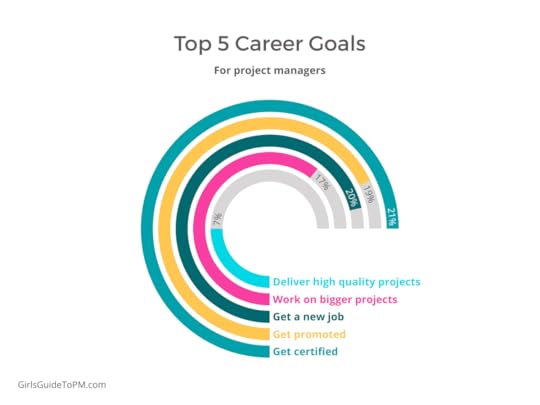 3. Schedule your revision
3. Schedule your revisionYou’ve probably heard of the saying, “Rome was not built in a day.” Cramming for a major exam last minute will probably not yield favorable results.
Even if you pass, you probably won’t retain the information for very long. A better strategy to studying for your PMP exam is to learn something new every day.
Then repeat, so you refresh your learning over time as well, consolidating your learning and building confidence in the topic.
Carve out half an hour to an hour every day and devote that time to studying. Make sure that you mark this time on your calendar so that you get a reminder (e.g. 7:00AM – 7:30AM every day).
Being consistent is the key to success. Remember: slow and steady wins the race.
4. Make it a priorityWhen there’s a will, there’s a way. Having the right mindset is the key to acing the PMP exam.
When you make it a priority, you will devote more time to studying and schedule your other commitments around it. Getting PMP certified usually only takes between one and three months. Compared to getting a project management degree, getting this certificate is a piece of cake!
You only need to study for a few short months, maybe forego a few social engagements, and you’ll be certified for life (as long as you evidence you are collecting PDUs on the recertification cycle) – there is light at the end of the tunnel!
5. Take study leaveMany employers will allow you take some study leave to get PMP certified. Some may even offer to pay for your training courses. Employers encourage continual learning because they know that they will from the extra knowledge and skills that you accumulate.
By taking study leave, you free up your schedule to focus on studying without the demands of your day job. Talk to your manager or HR personnel to see if taking study leave is a possibility for you, and if so, build that extra time into your PMP study plan.
Tip: If you are able to take some time off work, remember to save a day of your leave for the exam itself.
Bonus tip: Know your limitsIf you consistently work overtime and push your body to exhaustion, you will burnout sooner or later. It’s important to balance work, study with leisure activities. By giving your mind and body a break, you will actually retain more information when you study again.
It’s important to know your limits and balance your work and study accordingly.
These tips should help you find precious time in your work days to make the most of the hours you have available to you.
Recommended CAPM and PMP Prep BooksThe PMP Exam: How to Pass on Your First Try by Andy CrowePMP Exam Prep by Rita MulcahyCAPM Exam Prep by Rita MulcahyA Guide to the Project Management Body of Knowledge (PMBOK®) Guide from PMIThe 50 PMP Exam Questions Everyone Gets Wrong by Cornelius FichtnerA version of this article appeared in 2017.
This article first appeared at Rebel's Guide to Project Management
How to ask for part-time hours
I have negotiated going part-time twice inmy career: once successfully and once not successfully.
In this article I’ll share some tips on how to request part-time hours based on my experience of changing from full-time to part-time work.
Looking for advice on how to ask to work remotely? I’ve got you covered. Read my guide to asking your boss to let you work from home.
My switch from full-time to part-time hours (eventually)I wanted to be part-time for many years, and back when I was a Six Sigma Black Belt at my old employer I put in my first request for part-time working.
In the UK, employers have to consider your request, but they don’t have to grant it. I would have been the only part-time person on the team, and I didn’t have children back then.
My request was refused.
There’s a huge cultural thing around working part-time. In my experience, it largely depends on how your manager feels about part-time staff. Do they believe the rest of the team have to pick up the slack? Do they feel it would be too difficult to arrange work for the team if you aren’t there some of the time?
I changed companies later (nothing to do with not getting part-time hours) and after my first child was born, I went back to work three days a week, and then eventually four. I had a (different) manager who was interested in ROWE working where results rather than hours, and who had children himself.
I can’t say that a manager who has children is more likely to grant part-time working hours requests, but someone who appreciates work/life balance, who models a good working culture where unpaid overtime is not expected (unlike what this research into overtime shows about US companies), and who values a results over hours of bums on seats is probably more open to the conversation.
 What working part-time actually meant for me
What working part-time actually meant for meHowever, back to the story.
When I moved to a 4-day working week, I did technically work five days a week. Fridays were my main writing and blogging days, where I draft emails to send to you, my lovely readers, met with my virtual assistant and generally got life admin stuff done. So I had (and still have) childcare organized for five days a week.
I wanted to go part-time because I wanted more time for writing project management books and doing the fun stuff. Basically, I wanted something outside of my day job — I wanted to spend more time on my side hustle and not feel that time was eating into the balance between work and family.
Whether you have a side job, want time with your family, or want to balance study or retraining with work, going part-time could be an option for you.
What happened was I ended up taking calls about my day job on a Friday because I was at my desk anyway.
On one project, the team meetings were set up for Fridays at 11am every week before I joined the team. When I took over the project management, the team wouldn’t budge from that time slot. I had to join the call weekly, take the meeting minutes, and to be honest I resented it.
Generally, though, working part-time worked for me. Sometimes I start work at 7.30am, other times I’m working until 10pm at night. Sometimes I take a long lunch break or go to the school for Stay and Play sessions.
Everything I need to get done gets done, and I’m lucky to have flexibility from my employer to make that happen.
Read next:How 6 real managers got a work/life balanceI’ve lost track of the amount of people who have asked me for advice on going part-time as a project manager — or in any job (I also seem to speak to lawyers about this quite a lot!).
Here are some commonly asked questions.
“Can I work part-time?”Yes. Well, at least technically you can. There are very few jobs that demand you to personally be available all week, although if you are CEO of an international corporation that’s going to be a hard role to job share.
Some customer-facing roles are not going to be easy to do part-time either, if someone needs to be on site to deal with customer queries. Consulting project management roles, or ones where you are permanently based at the client’s site for the duration of the project, area also going to be tricky.
However, there are options for job sharing. I’ve known several people who have job shared in senior roles. They have all been women, and I can count them all on the fingers of one hand. It’s not an easy route, but it is possible.
For middle management jobs, team leader jobs, project management roles, business analysis roles and many other jobs, whether you can work part-time or not relies on whether your company is open to helping you make it work.
Your employer may find it more palatable if you switch roles at the same time as going part-time, and it’s up to you to decide if that’s something you are open to doing.
“Can I switch from full-time to part-time?”Yes! That’s what I did. I went from a full-time role to a four-day a week role.
Admittedly, I think that switch was easier because I had a period of maternity leave. I also had a period of time between my children being born when I was only working three days a week.
I do think it is easier to open up a conversation about part-time working when you come back from being off for any length of time, or are negotiating starting a new role with a new employer. Start thinking about what you would like your best outcome to be so when the time comes to return to work or take that new job, you are prepared to have the conversation.
You can also switch back again. Going part-time doesn’t mean you have to stay like that forever. When the season of life changes, you can move back into full-time working hours if you want, with your manager’s permission and support.
Chance are, they’ll be more than happy to have you back, and if not, you can start looking for an alternative role where you can do the hours you want.
Read next: Returningto work after maternity leave: 6 mums explain what it was like for them“How do you negotiate going part-time?”This is where we have to start having the conversation. Here’s what I’ve learned about part-time working in case you want to put forward an application yourself. Here’s how you start the negotiations!
It’s about your manager and your team.If they can’t (or won’t) support you, you won’t be able to make it a success. How can you show your working time won’t have an impact on the team? Or if it will, demonstrate how it can be made manageable.
People care more about what it means for them than what it means for you.
It should be about results.You should be judged on your contribution, not the hours you spend at the office. This goes for talking to your boss about flexible (i.e. work-from-home) working too. If you work in a results-orientated work place, then that is going to be a lot easier.
If your manager is someone who values presenteeism, your discussion will be more difficult.
 Here are the top 5 career goals for project managers, from my 2021 Project Management ReportBe clear about what part-time means.
Here are the top 5 career goals for project managers, from my 2021 Project Management ReportBe clear about what part-time means. I didn’t want to be a burden, and when I first started on four days a week I didn’t tell anyone that I wasn’t available on Fridays. I took meetings on Fridays because I didn’t want me being part-time to be ‘a thing.’ That gets tiresome quickly. Be clear about your availability.
Talk about how you will let people know when you are available, things like changing your out of office regularly to alert colleagues that you are not in the office. You can also put your working hours in your email signature so everyone has them clearly marked. I’m sure it won’t stop people ringing you on non-working days, but at least they’ll be able to see why you aren’t picking up.
Explain what your project teams will be able to do without you around. Talk about whether you are available for emergencies and if not what the back up plan is.
Now, I make sure my work balances out over the week. I do still do some work on a Friday but I make sure over the week I’m getting the time away from work. You might not be able to manage it flexibly like that, especially if you have to be in the office for work.
Start with an informal chat.Talk informally about why you are considering part-time hours and what it would mean for the team. Ask what you need to do to make part-time working work for everyone. Don’t make your first step be an official request.
The point of this step is to help you understand how your manager feels about it, and what concerns they may have. You can then address their objections in detail in your formal request.
Ask clearly and follow policy.Read the policy, and don’t assume your manager has. Ask formally for your request to be considered and be explicit about what ‘part-time’ means, listing the hours you are prepared to do.
Requesting to go part-time is best done in writing at this stage, so put together a letter that asks that you go from full-time to part-time in your current role. The letter should state:
What you are requestingHow you propose that would work in practice for you, your manager and your teamA polite close that references the policy (if there is one) and asks what the next steps will be.I don’t think you have to include the reason, but if you feel that would help get your request considered more seriously (for example, if your company has a policy of allowing part-time work for parental responsibilities), then put it in. If it is going to help your case, include it.
Be prepared to compromise if that helps you get closer to what you need. Think about whether you should ask for your perfect situation or the compromise situation first.
If your manager agrees to the perfect situation you’ll both be happy, and if they don’t you can move to discussing your next-best scenario.
Think about the other conditions of employment that willchange.For me, going part-time came with some other conditions. It’s not just about pay and hours. You might lose some influence at work, you might not be able to attend meetings other people attend as they happen on your day off and all that can have an overall negative impact on your career growth over time.
All that happened to me. It’s part of the price to pay for going part-time, and if your part-time reason is important enough to you, then it won’t matter so much. Because you’ll be getting the benefit of doing your side hustle, supporting your family and so on during your ‘off’ time, which will make it worth it.
You’ll have to live with it if you want to go part-time, because you can’t expect everyone else to put their work situations on hold for you. So be aware it’s a possibility.
 “How do I convince my boss to let me go part-time?”
“How do I convince my boss to let me go part-time?”Consider what it’s going to mean to them. You need to be able to see it from their perspective.
How will you doing fewer hours impact on the team overall? Will the team’s deliverables be cut by a proportionate amount? Nope. They won’t. Every year people are asked to deliver more and more, and if you want one day off a week (for example) they aren’t going to get permission to recruit someone just to cover you for one day.
Someone else in the team is likely to have to pick up the slack, or the team is going to have to do the same with fewer working hours, or they will have to deliver less. But that isn’t your problem.
If there isn’t a job share in the future vision, then your manager is going to have to find a way to adapt the team’s deliverables to the amount of available resource — and that shouldn’t mean you doing overtime i.e. working on your day off.
We did a survey that shows people work 233 hours of unpaid overtime in a year, and I believe it’s worse if you are part-time because there’s pressure to work in other people’s normal working hours.
The positive is that the team’s wage bill will be cut proportionately, so that’s a pro you can put to your manager.
Create a proposal that works for you bothUltimately you need to put forward a proposal that works for you both, and for your colleagues. You don’t want them to have to be picking up the slack while you are out of the office, because that just means they have to work harder because of your part-time hours.
Look for ways to make it workable and not a burden for everyone. For example, what meetings could go, what can you delegate? Could the saving in your salary be put towards something else?
Would you be open to considering compressed hours, where you work the ‘normal’ number of hours per week but over longer days so you get a day off? That can mean more stress and longer at your desk Monday to Thursday, but you get the time back on a Friday, for example.
Consider a job shareIf you think your job can’t easily fit into part-time hours or be reduced appropriately, think about a job share. This is where two of you work the same position, and you have a handoff in the week so that the other person can pick up the work the first person started.
Job shares mean the employer gets a greater degree of coverage i.e. there is never a day when someone isn’t available to do work. And you get the share the burden.
I know a few people who job share and aslong as you have the right partner, it can work out very well for everyone.
Point out the cost savingsIf you work fewer hours, the company pays you less.
That might be a selling point for yourboss, especially if you only plan to be part-time for a short period of time,for example while caring for an elderly relative or for a few years while yourchildren are small.
They could replace you with a full-time person (if part-time hours are a deal-breaker for you and you’ll go elsewhere) but then they’ll have to fund the recruitment and onboarding of a new member of staff.
Think about flexible workingIf you can’t get your boss on your side, think about other suggestions you can put forward that give you the flexibility you want.
For example, working compressed hours, flexible start and finish times or working from home (or more hours from home if you already do some of that). Flexible working still means you have to do the hours, but you could still find some way to do your side hustle or caring responsibilities if you had the option for compressed hours, for example.
You’ll be exhausted, but you could make it work, possibly.
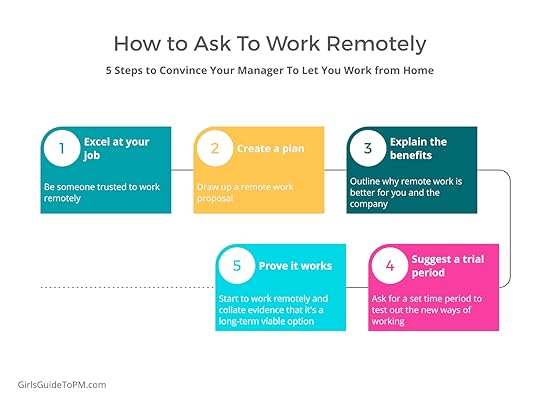 Part-time working is awesome!
Part-time working is awesome!Putting aside the drop in salary, going part-time was the best thing I have ever done. It wasn’t without challenges, like people expecting me to be available all the time, and forgetting I was a part-timer, but overall, it gave me so much more freedom.
I’d love to hear your stories of requesting part-time working hours and the results. Come over to our friendly Facebook group and share your experiences!
Pin for later reading:

This article first appeared at Rebel's Guide to Project Management
December 5, 2023
5 Ways to work smarter, not harder
Did you know that in the US an employee individual typically works overtime in a year equating to not being paid until 14 February? That’s 233 hours of ‘free’ work we give our employers because overtime is unpaid.
For me, working from home for a portion of the week has given me back a balance that I didn’t have when I was in the office everyday.
I have a home office in the garden, so it’s still a working environment away from the kids and the washing machine, but without the grind of the commute and having the option to wear jeans I’m a lot happier.
I’m more productive. I get at least as much done as I would do in the office and normally more.
But working smarter and not harder isn’t just about having some time to work from home.
The whole ‘working smarter, not harder’ thing is a buzzword, but what does it actually mean?
I’m a project manager, and we are generally quite a well organized bunch. I didn’t think I’d learn a lot at an event I attended a while back, with that exact name: ‘working smarter, not harder’.
However, I did take away some interesting figures. Here are some other stats:
78% of women say they work for companies with flexible working policies, but better technology would make it easier to balance work and life.55% said their work/life balance was just in control, but they wanted more ‘life’.45% said their work/life balances were out of kilter, and actually way past the point of being in balance.These figures came from a survey of the women in the room, which we completed before we arrived.
So where can you start when you want to work smarter?
Here are 5 ways that you can flex how you work to be more productive and fit your lifestyle more effectively.
1. Know your strengthsDon’t be an all-rounder. It’s a waste of valuable time to do things when someone else can do them for you, better than you.
Don’t be threatened by surrounding yourself with good people and having a great team. They are there to support you and make you all look good.
2. Set clear boundaries about the hours you workIt’s fine to work at the evenings and weekends if it gives you time in the week to do what you want. Be flexible, but take the time back. This also sets a good example to the team.
I am trying really hard to do this, but believe me, I am a work in progress.
3. Set clear boundaries about how people contact youIf people can reach you by Teams message or Slack, SMS, mobile phone, desk phone, home phone, email and so on it makes life much more stressful.
Tell people how you can be contacted and stick to it. You could have a “drop everything” list of people who have all your contact details. These people would be your child’s school, your partner, your director: the important people in your life whom you would make an exception for because you know they wouldn’t call you up unless it was critical.
Everyone else can get in touch on your convenience.
This was a huge game changer for me: since the event I’ve been using a “drop everything” list for contacts and I feel like now I’ve got rules for who gets in touch when (even though they don’t know about those rules), it creates better balance for me. My choices feel validated when I don’t answer the phone!
4. Hide away and catch upI’m doing this right now! I have booked into a hotel for the weekend to write my next book and I’m just doing a few bits of blogging to give my mind a break.
The equivalent for us as employees is to book time in your diary to work at home or at a different office. You’ll still be available by phone but you’ll be more productive as people won’t be constantly passing by your desk and interrupting.
However, you might still need to put your out of office on if you seriously don’t want to be disturbed. These days, even if you are at home you can still be pinged every few minutes by Microsoft Teams chat messages or Slack, or invited to Google calls… keep to your boundaries!
This isn’t a strategy you can use every day but helps me massively to know that I have quarterly catch up days already planned in my diary.
5. Learn to use your technologyAnd ensure you drive it, not the other way round. Because not knowing how tools work is such a time waster and it increases my stress levels hugely.
Learn all the keyboard shortcuts, tap into generative AI and other automation tools so that you can be efficient with the tool set you have.
With those 5 tips you won’t radically change your working practices but you can bring a bit more balance and control into how you approach your work time. And that’s smarter, without being hard.
This article first appeared at Rebel's Guide to Project Management
Overtime Overload: How the Power Shift is Changing US Work Hours
We surveyed 3,000 employees across the United Status to find out how many unpaid overtime hours they worked in 2023.
The map below reveals the surprising results of how much more unpaid overtime employees in each state worked in 2023 compared to the previous year.
window.addEventListener("message",function(e){e.data.hasOwnProperty("FrameHeight")&& (document.getElementById("data_map_iframe").style.height = e.data.FrameHeight+ 'px')}),document.getElementById("data_map_iframe").onload=function(){ document.getElementById("data_map_iframe").contentWindow.postMessage("FrameHeight","*")};The Great Resignation and quiet quitting put power back in employees’ hands. We made choices about how and where we would work in an attempt to address burnout, deal with dysfunctional office politics and get a better work/life balance.
Those trends might have reflected changing attitudes towards work and employer/employee relationships from 2021, but how much power rests with employees today?
We surveyed 3,000 US employees and asked the question: “How much unpaid overtime have you worked per week on average in 2023?”
The average respondent is working 4.5 hours a week above and beyond what they are paid to do. That’s over the equivalent of month’s extra work per year (233 hours).
Overall, there was a collective surge of 46 billion unpaid overtime hours among workers, a significant rise from the previous year.
There are also significant differences based on location.
For example, residents of New Hampshire are bearing the brunt of this trend, reporting nearly 10 hours of unpaid overtime each week. Montanans, however, have seen a slight decrease in unpaid overtime, working only 36 minutes more than last year.
The Great Power ShiftOur findings suggest a shift in the power dynamic from employees to employers, possibly a repercussion of the post-Great Resignation period.
More unpaid overtime reflects that power shift: employees are choosing (or being asked) to do more, perhaps as a result of teams being smaller but having to handle the same amount of work, or wanting to keep their jobs in uncertain economic times.
Requests from businesses to return to the office might be influencing the dynamic too.
Overall, the billions of hours being worked for free represent a huge financial benefit to businesses and the economy.
Personal time vs overtimeThe survey shows that more personal time is increasingly being ceded to employers.
The dramatic increase in unpaid overtime points to a potential erosion of workers’ rights and fair compensation practices. There’s also the increasing risk of burnout for employees, with impacts quality of live, overall societal health and economic productivity – burned out employees are not good for employers either.
The results underscore the importance of employees advocating for themselves, being aware of labor laws, and employing strategies to manage workloads effectively.
Employers should also be aware of the impact of the misclassification of salaried positions and the exploitation of overtime loopholes.
The Rebel’s Guide to Project Management state of project management survey found that workload is the biggest cause of stress for around 30% of respondents and 44% reported not having enough people in the team to do the work required.
Overtime, paid or otherwise, might be a short-term solution to plug resource gaps, but it’s not sustainable, and it contributes to feeling devalued as an employee. Businesses and employees need to come up with alternative solutions.
MethodologyOnline panel survey of 3,000 adults based on age, gender, and geography in November 2023. Internal data sources are used to obtain population data sets and comparison against previous year. We used a two-step process to ensure representativeness through stratified sampling and post-stratification weighting.
This article first appeared at Rebel's Guide to Project Management
December 3, 2023
Project Management Survey Results
We surveyed project management professionals about what working life is like now, and the results are surprising!
Project management is often considered a highly paid, interesting role, and it is. But there is another side to the job: high stress and low organizational commitment to doing work in a structured way makes it a very challenging role.
Key findings37% of project managers have considered leaving the profession in the last yearOver a fifth of project managers say their career goal is ‘getting through the year’Not having enough or the right type of resources are big problemsWorkload is the biggest cause of stress28% of project managers say they put dates in a spreadsheet and use that for project scheduling53% of project managers are using hybrid methodsOnly 15% say they are using agile approaches55% of project managers are leading 2-5 projects (consistent with our 2020 survey)“I really enjoy the job and the challenges that come along with it but a lot of companies seem to be trying to do the same or often more with less resource and experience. This alongside a jump of projects being run simultaneously is slowly increasing stress levels and hindering the ability to deliver successful projects.”
Resources are the biggest concernThe biggest concern project managers have right now is resourcing. Between not having enough people and not having the right people, project managers are scrambling to get work done.
On top of that, a third of people report that deadlines are unrealistic.
These projects are destined to be late. You can’t deliver on time without the right people. If more resources were available, perhaps schedules would be realistic. If schedules were realistic, maybe you wouldn’t need to so many extra people.
The takeaway for organizations is that you can’t do what you don’t have: I talk to many, many project leaders through my mentoring and training and so many of them say the same thing: the organization’s appetite is bigger than its capability.
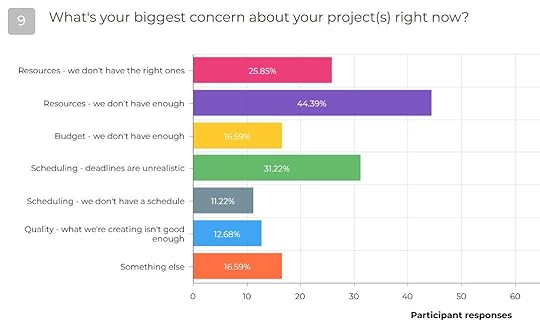
“Stakeholders, especially project sponsors, boards, senior stakeholders, all need to know project managers need the right level of support from them and the rest of the organization. I’ve seen too many project managers be left to fend for themselves or figure things out, with hardly any training, much less support.”
“With project management being a key capability or competency to deliver needed change, organizations really need to invest in medium- to long-term capability building, as they would do to other specialized roles and even executives.”
Project managers are looking for new jobs32% of project professionals are looking for a new job outside their company in the next year.
The brain drain in project management is a real concern for employers. 14% report seriously having considered leaving the profession in the past year and taking up roles that are not project-related. 23% say they’ve had the same thought.
If we lost nearly 40% of project managers from the role, would the amount of people joining the profession balance everything out? Maybe, but with people with less experience.
Only 17% say they want to stay with their company and get promoted.
“It is quite a challenge to manage a new product development project with limited technical background. So i may consider switch my career path back to operational management which suits me better. Also working in a non-structural start-up with constant changing and no rigid timeline control, makes it even harder to meet project goals on time/budget with good quality.”
Repetitive tasks need to goWe asked, “If you could take one task off your To Do list, what would it be?”
Unsurprisingly, chasing people for status updates topped the list with nearly 43% of respondents saying this was their least rewarding task.
The good news is that with tools like generative AI, RPA and other automations, we should be able to automate a lot of low-value work like status updates and meeting admin.
However, we still need humans in the process: they still have to complete the updates, even if they are prompted automatically, or enter the data for the system to pull automatically.
I think we’re a way off status updates writing themselves, and for some projects that are predominantly new or knowledge work, it would be hard for an AI tool to capture what has been achieved each month unless someone told it.
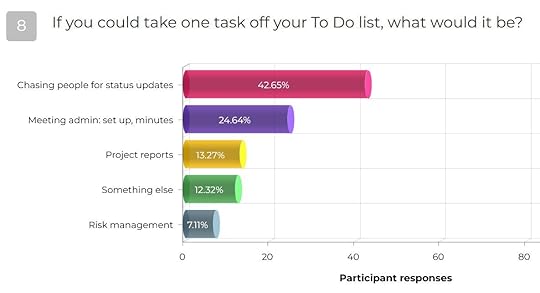
“Right now, it’s boring and frustrating. With repetitive and tedious administrative task. Starting to feel like an admin assistant. Managing up has not been effective or appreciated. Switching industries and roles are next best steps.“
“Being asked to do every admin task in the company because we have downsized and laid off resources and there is literally no one else who can do it! And yes I mean everything from scanning post to clearing offices to publishing the annual report…”
Certification goals50% of people who said their career goal is being certified within a year plan to take the Project Management Professional (PMP) exam. The remainder are split between other certifications including agile credentials.
“Most of the time I feel undervalued as a project manager and it’s difficult when you cannot hold people accountable.”
There’s no such thing as a standard teamWe asked “How many people in the largest project team you are working with?”
Responses were evenly split, with a third of project professionals working with small teams of under 5 people, and a third working with teams of greater than 10 people.
We did not define ‘team’, so if you include the wider group of organizational stakeholders like the legal team, or a procurement manager helping out on a contract, that might influence the results here.
Want to know more about what about the situation for leaders juggling several initiatives? Read the survey results from our research on managing multiple projects.
Dig into the survey resultsYou can scroll through the charts and crosstabs, and apply filters. So if you only want to see the results from the people who said they had seriously considered leaving project management in the last year, you can do that.
The filters are a bit tricky – select the question/response you want to filter by, and then scroll back up to the top to toggle it on and the results will update.
The verbatim comments are not accessible via this embedded view of the survey data.
Have a play, you can’t break anything!
MethodologyThese are the results from the 2023 project management survey carried out by Rebel’s Guide to Project Management. The respondent group was 217 self-selected individuals working in the project profession who completed the survey online during April 2023.
Respondent profile: 40% reported having over 11 years in project management.
This article first appeared at Rebel's Guide to Project Management



